【Creator says】 Created in the name of FOSS.
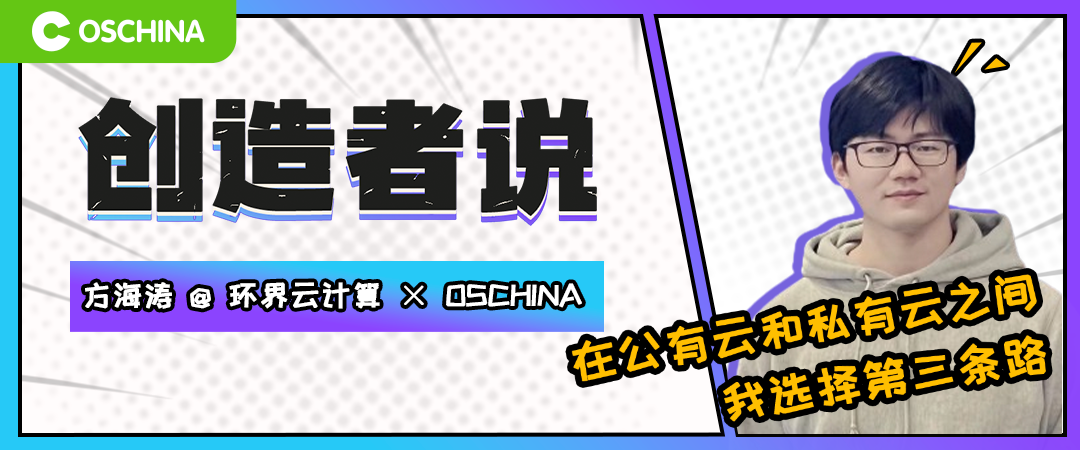
Some time ago, the controversy between cloud migration and cloud migration was in full swing. The price, security and transparency of public clouds were questioned, and the service and maintenance costs of private clouds were also questioned. Just when the two sides were at loggerheads, a new project caught our attention - Sealos, a cloud operating system. Between public cloud and private cloud, it chose the third path - making the public cloud private Clouds abstracted together.
Fang Haitao, the author of Sealos, once served as the head of the container platform at iFlytek, and later was responsible for the cloud native integration platform at Alibaba Cloud. He led the sealer project and donated it to the CNCF community. He feels that he is "an entrepreneur at heart" and started his first business as early as 2016, but unfortunately it failed. Sealos's development rate is doubling every year, giving him new hope. After receiving the investment from Qiji Chuangtan, he quickly roped in his old friends and colleagues to set up Huanjie Cloud Computing Company. Since the product Sealos was launched in June 2023, the number of registered users has exceeded 80,000 in only half a year, and the monthly income has exceeded 300,000.
Fang Haitao believes that although the current public cloud and private cloud are quarreling fiercely, in fact, each has its own problems and applicable scenarios. It is meaningless to talk about advantages without scenarios. He believes that there is no essential difference between public cloud and private cloud. They both connect computing resources. They can make a cloud operating system as easy to use as Android . Anyone who wants to use the cloud can just install one . And now, this idea has come true.
01 The gears of entrepreneurship turn again
After his first entrepreneurial failure, Fang Haitao returned to his role as a simple programmer. One night, in order to solve the installation and high availability problems of the early version of K8s, Fang Haitao put an installation script he wrote on the Alibaba Cloud market and named it "kubeinit" for 15 yuan a copy. Unexpectedly, someone actually bought it. Looking at the income, Fang Haitao was very excited, as if he had seen the future business empire. However, this first version had too many problems and the program was very complicated. Fang Haitao had to spend a whole day providing after-sales service to this customer, and the cinema was still helping users solve problems.
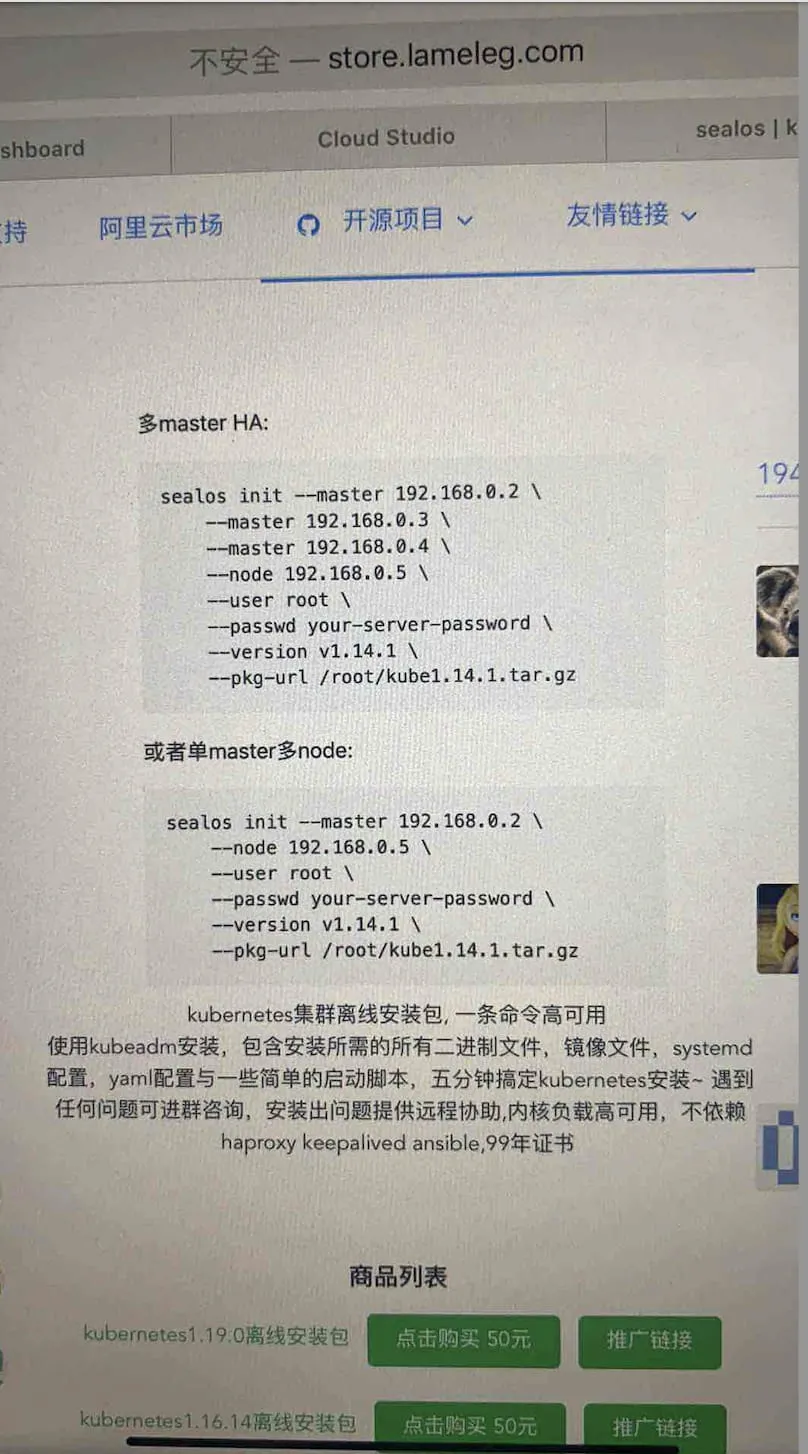
However, this good start allowed Fang Haitao to regain some confidence in starting a business. As sales surged, Fang Haitao also took advantage of this to buy a new mobile phone, iPhone 8. But unfortunately, there were more and more problems, and Fang Haitao couldn't spare time for after-sales maintenance. So, he rewrote a v2 version based on Ansible, but Ansible was only much more convenient to use and did not solve the fundamental installation complexity problem. Many users failed to install, especially in offline environments, which are more error-prone. Ansible needs to be Put it into Docker.
In order to solve this problem, Fang Haitao thought for a long time and finally found inspiration in the kube-proxy source code. Borrowing the implementation method of the load balancer, removing heavy components and making the entire script simple, the third version of Golang solved the previous problems and made the installation extremely simple. One command solves everything - this is what happened later Sealos.
Probably everyone has been struggling with K8s installation for a long time. After Sealos gained word-of-mouth, it dominated the Github trend list for a week, which shows the strong demand. Such outstanding performance also attracted the attention of Lu Qi's team. In March 2022, Sealos received an angel investment of 2 million from Lu Qi’s team. Fang Haitao's entrepreneurial journey has also reopened.
02 Unique design
Although there is a consensus that "cloud is the future", there are differences on whether it is a public cloud or a private cloud. Especially after this year's public cloud failure incident, the voice of private cloud has also become louder. After all, the public cloud is basically a rental business. Many software are open source, but they are still sold at such high prices, which inevitably makes users suspicious of "cutting leeks." As for private cloud, the construction cost is too high. Whether it is purchased or self-built, the cost is indispensable: the starting price for purchasing is tens of millions, and the minimum number of people for self-built is 30. This is also the reason why current users are struggling. Some commentators put it well: The cloud is like a besieged city. People outside want to get in, and people inside want to get out.
However, faced with this A or B problem, Sealos chose the third path: abstracting the public cloud and the private cloud together, integrating the elasticity and agility of the public cloud with the security and controllability of the private cloud, and at the same time The price will be lowered.
Is there such a good thing?
How did you do it?
Sealos uses Kubernetes as the "cloud kernel" and based on this cloud kernel makes a cloud operating system distribution that can run on multiple servers . "Everything is an application" on the system. Eventually, all servers in the entire data center can be turned into a "logical computer", making using the cloud as easy as using a PC:
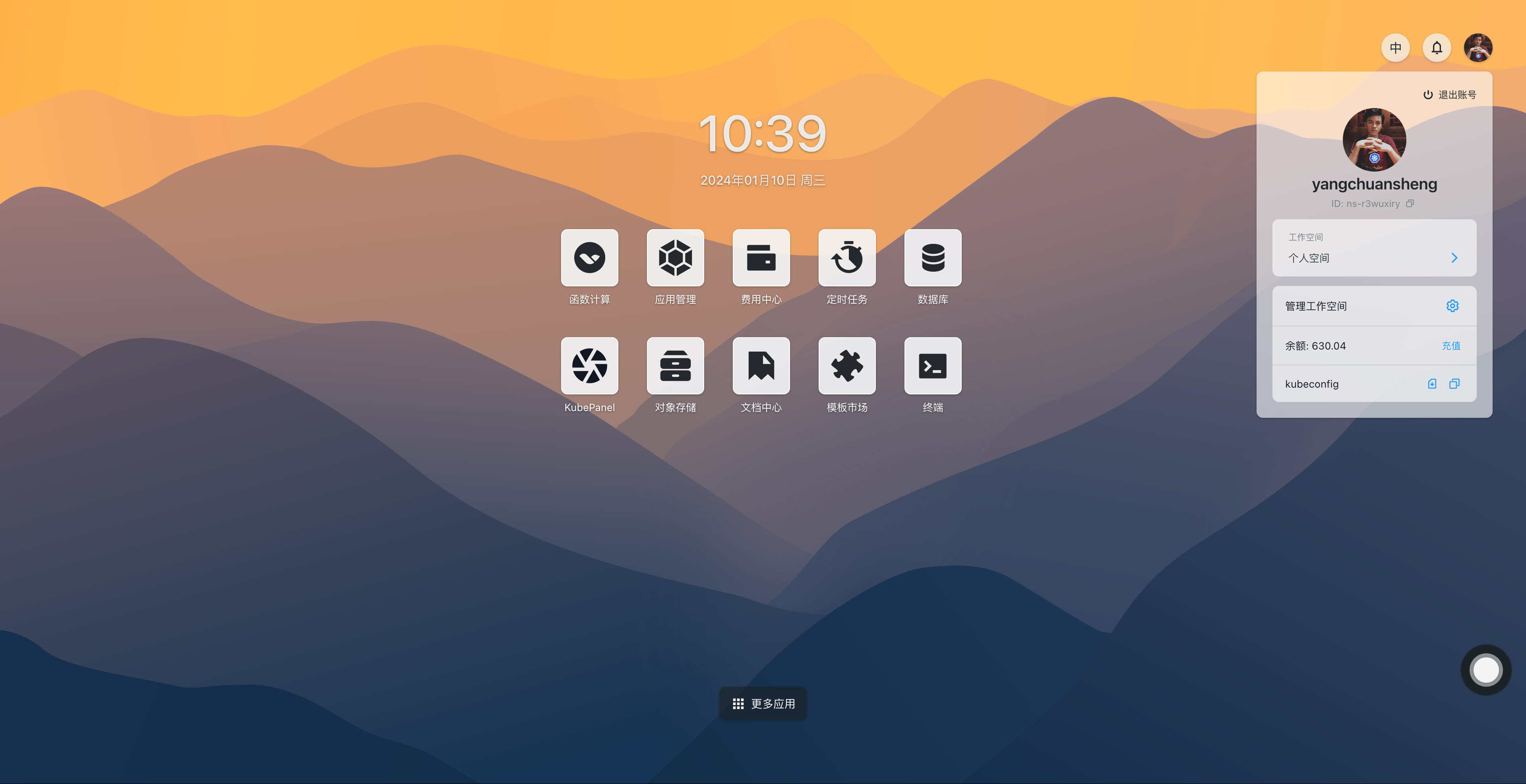
The cloud architecture has also shifted from the traditional three-tier architecture of IaaS , PaaS , and SaaS to a new architecture with Kubernetes as the cloud core:
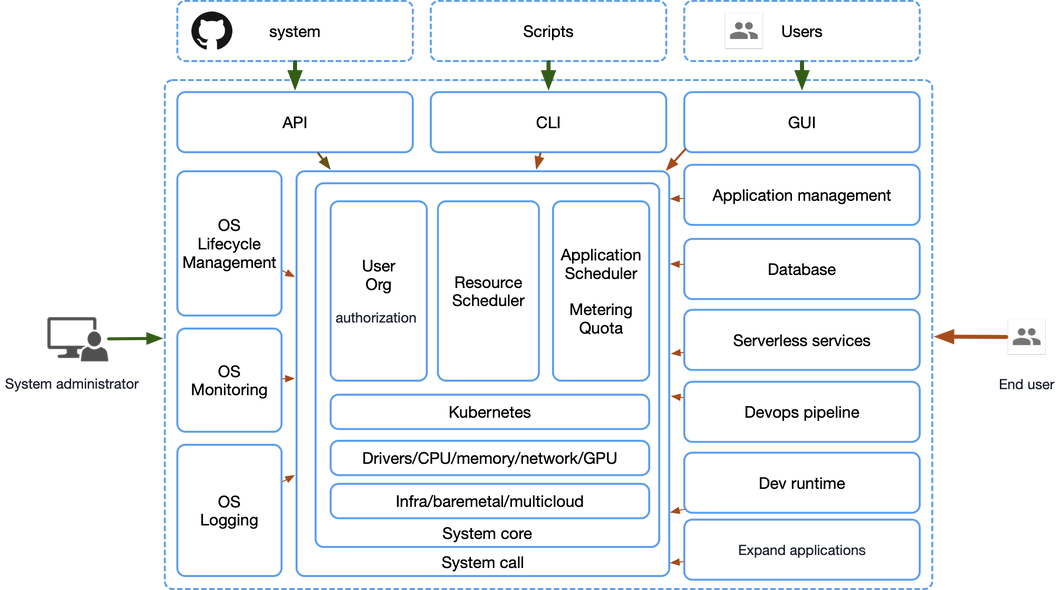
Ultimately, the relationship between Sealos and Kubernetes is like the relationship between Red Hat and the Linux kernel. The only difference from a stand-alone operating system is that Sealos is installed in the entire data center, and what is running on Sealos is not QQ, WeChat, etc. Stand-alone applications, but various distributed applications that developers need to use. With Sealos, the entire data center is no longer an isolated server, but a whole, becoming a super logical computer. Using the cloud at this time is as simple as using a server.
Whichever enterprise needs to use the cloud, just install a cloud operating system and it will be done.
In Fang Haitao's view, the essence of cloud computing is to provide computing resources (including hardware, software and networks, etc.) to users through the Internet and other methods. The computing resources connected to a single data center are only for one's own use, which is a private cloud. Through the public network It is a public cloud that everyone can use. As for functions, in theory, private clouds can do everything that public clouds can do, and there is no essential difference. In the future, public cloud and private cloud may come together and become the same thing.
This concept is also adhered to in the design of Sealos. Public cloud and private cloud are the same set of codes and the same abstraction, but the configuration and installed applications are different. Running in the company's own computer room is a private cloud, and providing services to the public network is a public cloud.
Users on both sides grabbed it with one hand.
This design also makes Sealos concise and simple, avoiding the "shit mountain" experience of traditional cloud use.
Under a highly abstract architecture, all specific capabilities are expanded through applications. Users can install whatever they need and uninstall it if they don’t. It is free and flexible, and the cloud operating system will not increase in complexity as the software functions increase. In this way, no matter whether you understand Kubernetes or not, you can happily use Sealos. Cloud native experts can open the terminal and type various native commands, and DBAs can also directly use database applications, which is extremely flexible.
"Do users need to care about Kubernetes? In fact, no. We just need to find a way to deliver the applications that users ultimately need directly to users. Just like when you use Linux, you rarely care about Kernel. The same is true for cloud. Development The ability that users need to use is the most important, and not many people will need to care about this core in the future." Fang Haitao said.
03 Learn Linux and become Linux
In the growth process of Sealos, it is not difficult to find that many product ideas have learned from Linux. During the interview, Fang Haitao also highly praised Linux. He believes that Linux is simple to use, stable in operation, requires little investment in high costs, and basically does not require customized development. Openstack professionals may not be able to install it in three days, and they have to change a lot of code to use it. It is too complicated and should not be the representative of private cloud. Linux is the model to learn from.
"Linux is the same Linux wherever it is used, and the same should be true for the cloud. Otherwise, if a lot of messy things are piled in and become a hodgepodge, Sealos will only become another failed PaaS platform." Fang Haitao said.
Sealos currently only has one set of open source code, which is the same in every version, and there are no branches . And it is welcomed by many developers because it is as low-cost, easy-to-use and standardized as Linux.
"Actually, all clouds are pretty much the same. The problems that Sealos can solve can basically be solved by other clouds. But Sealos is so popular now because of its ease of use." Fang Haitao introduced, "The same thing, if In Sealos, the K8s cluster already exists, and you only need to click the CBT button to start it. But if you build it based on virtual machines, you may need to build a back-end database, build load balancing, perform backup and recovery, etc. Only then can we put the whole thing together. That’s the cost difference.”
In terms of operation and maintenance, Sealos is also very stable. "In our philosophy, there should be no such role as operation and maintenance. The entire system is self-operated and maintained, just like a PC operating system with few problems when running."
Moreover, the minimum size of Sealos is only 300M. After installing Sealos, enterprises can have their own cloud in various environments.
"In addition, Sealos has a standardized application market. What many people need is actually upper-layer applications. We can package these applications and give them directly to them. Some cloud vendors may also have similar Marketplaces, but these Marketplaces lack standards. , it is very troublesome to collaborate between software producers and consumers. We use the thinking of cloud operating system. When doing this, we will follow the de facto standards of the cloud native ecosystem to connect software producers and consumers. , collaborate with each other to achieve a virtuous cycle.”
This approach to cloud based on operating system thinking will eventually change production relations, allowing the cloud ecosystem to be like the Android ecosystem. It is no longer a single vendor providing cloud applications, but a many-to-many mesh collaboration relationship.
04 Amazing project: open source and business are not separated
As of now, Sealos has 12,000+ stars on Github. The good mass base has also opened up a smooth commercialization path for Sealos.
Unlike other open source projects, Sealos does not follow the path of "open source first, charge later". Instead, it has charged fees since its birth. In the early days, installation packages were sold. The code was open source, but the installation package was charged. If the user built the installation package based on the source code, it might take a week. However, it can be downloaded immediately for 50-168 yuan, so it sold a lot, with more than 1.5 million installed units. Second-rate.
After starting a business, Sealos also began formal commercialization. There are currently two main business models: public cloud and private cloud. But what’s interesting is that Sealos has only one set of code , whether it is the standard version or the commercial version , whether it is a public cloud or a private cloud. Open source and commercialization are inseparable. So how does Sealos make money?
The public cloud is very simple. You can open a browser, register, log in and recharge, and it is billed according to your usage. But the real profit point is: cloud services .
“Many companies that work on open source projects have this kind of confusion: if the open source is done too well, users won’t pay? In order to solve this problem, many companies will make two versions, one is the open source version with fewer functions; It is a commercial version with some powerful functions. I really don’t like this approach. Because maintaining two versions is very tiring. Every time, you need to consider which things should be merged with the enterprise version and which things should not be merged. It takes a long time. The first version was directly forked, and later the open source version was simply not invested. This method was very awkward and not advanced.
I like to make all good things open source, so that open source and commercialization can form a synergy as much as possible. So how to avoid the problem of 'after open source is done well enough, users are unwilling to pay'? It’s simple – cloud services. "Fang Haitao said.
Even if Sealos' open source is perfect, users still need to pay for virtual machines when building it. In this case, it is better to recharge the money directly to Sealos. “Essentially it’s a cost transfer, but this model is good for all three parties.” For users:
-
It is simpler to use. You can open the browser and use it directly, eliminating the need to build it yourself.
-
Dedicated team maintenance is definitely more professional than self-maintenance.
-
With more users, the cost per user will drop and you will spend less money.
-
Continuously upgrade and update.
Therefore, public cloud users are very likely to use cloud services. Users are spending more on Sealos, but the total cost of spending is likely to be lower. Sealos has also received more funds to develop new features and expand economies of scale.
Another business model is private cloud. Some users bought servers and put them in their own computer rooms. At this time, Sealos continued the original business model, but instead of collecting the download fee for the installation package, it implemented a metering system within Sealos, billing based on volume, and the account balance is used up. You have to recharge.
This method realizes the complete unification of public cloud and private cloud billing methods, and at the same time solves the problem of internal personnel quotas within the enterprise. There are reasonable prices for customers of different sizes, so there will be no situation where small customers cannot afford it or large customers dare not use it.
As for whether such charging will offend users?
"I still think it is natural to provide value and charge reasonably. The principle is to try to find the point that maximizes the overall interests of customers and the project . If the charge is high, it will harm the interests of users. If the charge is cheap, we cannot move forward quickly. We must balance the interests in between. Relationships are a unity of contradictions. This business model now allows open source and commercialization to form a synergy, and we can invest confidently and boldly to do a good job in open source without worrying about users not paying," said Fang Haitao.
05 Business team like open source model
Not only is Sealos’ product interesting, but so is the team behind it.
Today, Huanjie Cloud has only 21 people, 20 of whom write code, including Fang Haitao himself. Even operations are from a technical background. Except for a clearer division of labor in business, at other times, Huanjie Cloud is more like an open source community. Everyone is contributing code to this open source project, but the modules they are responsible for are different. This decentralized open source collaboration method has been running smoothly to this day. One of the important reasons is that Huanjie Cloud does not rely much on sales. Most of the customers come to the door on their own initiative, so the entire team can simply engage in technical work. , without many of the rules and regulations of traditional enterprises.
Of course, this kind of comfort of "sitting at home while money comes from the sky" is inseparable from the traffic that open source itself brings to the project. Sealos' good reputation and high popularity in the community have become Huanjie Cloud's biggest customer acquisition point. Current data shows that up to 90% of revenue comes from proactive customers in the community. Because they take the initiative to seek solutions, this also means that their product acceptance and closing rates are relatively high.
Currently, in addition to Sealos, Huanjie Cloud has also hatched two popular open source projects: Laf and FastGPT. Laf is a function computing platform that allows you to write code directly online. It has 6,000 stars so far. FastGPT is an AI knowledge base Q&A platform based on the LLM large model. It combines the private data within the enterprise with the large model to become an intelligent Q&A system within the enterprise. Currently, it has 8,000+ stars.
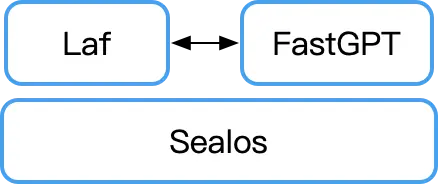
Laf and FastGPT provide Sealos with a wealth of applications. FastGPT and Laf provide each other with AI automatic coding capabilities and plug-in development capabilities, while Sealos provides extensions for Laf to enable FastGPT to run. The three products complement each other and work closely together to form a complete ecosystem.
Half a year after the three products were launched, Huanjie Cloud Computing has accumulated 84,000 registered users, with a payment rate of 10% and a renewal rate of more than 70%. What's even more commendable is that Sealos and Laf have successfully supported a number of applications with millions of registered users, and their operating costs are only 1/20 of traditional cloud services .
Wang Fugen, the author of Laf, and Yu Jinlong, the author of FastGPT, are both Fang Haitao's entrepreneurial partners. We found that there is no difference in the way Huanjie Cloud recruits team members and community contributors. They are all recruited in the same way as partners.
One of the main developers and long-term contributors of Sealos was originally a user of Sealos. At that time, Fang Haitao held a "share and win prizes" activity to promote Sealos. He earned 100 yuan for the community, but Fang Haitao rewarded him 1,500 yuan. He felt that this community was strange, so he stayed. Fang Haitao believes that if there is no commercial support behind an open source project, it will move very slowly. Moreover, open source contributors deserve to be rewarded. Therefore, in order to attract the open source community, Fang Haitao specially wrote an incentive system to give back to the community's project contributors: when the requirements are merged, the money will be automatically transferred to the contributor's Alipay account. This tradition has been preserved to this day.
"At that time, almost all the money earned from the project was given back to the community. It was either given to developers or bought servers to provide a better experience." Fang Haitao said, "But I think this is a very interesting thing. The model creates a virtuous cycle so that the project keeps moving forward, which is actually very good.”
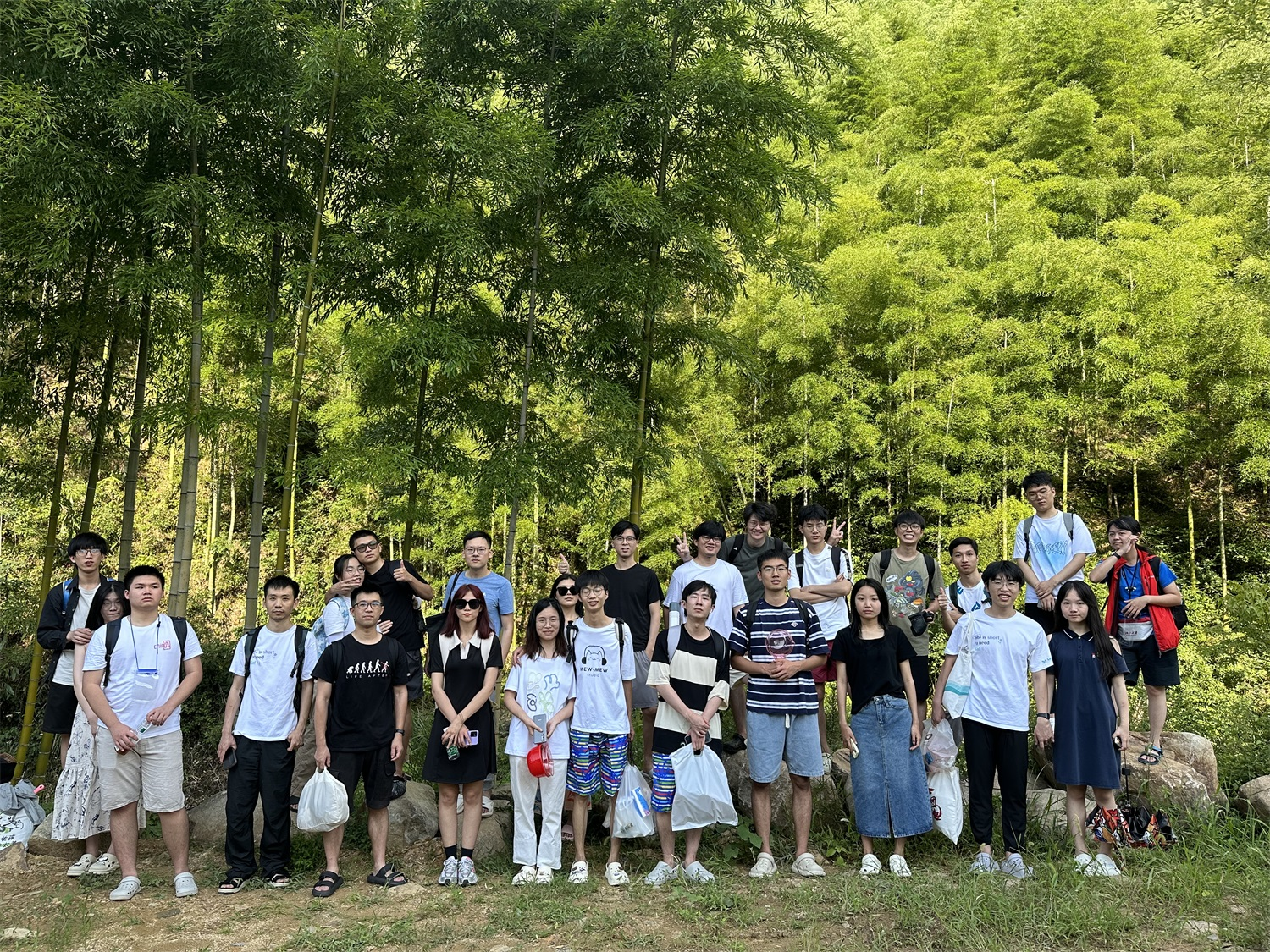
Huanjie Cloud Computing Team
06 Small projects prepare for big challenges
Currently, there are more than 100,000 Sealos community users, including many large companies.

Within two months of its launch, the number of registered users exceeded 10,000, and the cloud service runs a total of 7,000+ applications.
There are many types of applications, including GPT-related, large models, games, corporate official websites, business systems, etc.
But Sealos's ambitions don't stop there. Its goal is to evolve into a ubiquitous cloud operating system, providing people with a cloud service experience as simple as using a personal computer.
Fang Haitao revealed that Sealos will have two evolutionary directions next:
One is the stability of the product. Because the cloud is inherently a trust issue. If the product is unstable, users will definitely not use it in depth, and may only try it briefly, or put some unimportant things such as blogs and forums in it. When Sealos was first launched, it was only used by developers, and they could only charge ten or twenty yuan. But over time, after the market recognized the stability of Sealos, companies gradually came in to use it, and the recharge amount also increased. Therefore, product stability is the core.
However, there are actually certain challenges in building stability well enough, especially after reaching a certain scale. "Let me give you an example. Almost all cloud-native gateways on the market cannot meet our needs, and almost all of them have been destroyed by us. At this time, we need to build gateways to make them more robust. Or choose An upstream and downstream open source community helps them optimize and become better together." Fang Haitao said.
The second thing to do is ecological construction. "Now there are many applications that support containers and Kubernetes. The first thing to do is to put them on our application market, expand the width and depth of the application, and then feedback the deployment on Sealos to the community. This kind of keeping up with the downstream Everyone welcomes cooperation between open source projects. On the one hand, Sealos has huge user traffic, which can divert traffic to this open source project. On the other hand, this open source project can also divert traffic to Sealos, so it is completely mutually beneficial. thing."
There is a long way to go, let us wait and see what the future holds for this small project.
【Creator Says】
OSCHINA’s new open source startup interview column [Creator Says].
The open source community needs creators, who can be individuals or companies composed of individuals. With the development of open source software for more than 20 years, open source contributors from companies have become the backbone, and a number of companies have been founded around open source software. This column will focus on open source startups and their founders, discuss the current open source status, share open source business stories, and contribute to the open source community.
Review of past issues:
A technical person "went astray" and created a new species of vector database
